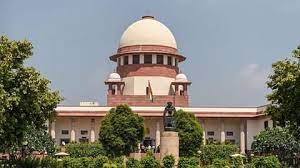Live Classes

SC serves a reminder that the House should work with in constitutional parameters.
In ruling that the one-year suspension imposed last year by the Maharashtra Assembly on 12 BJP legislators was illegal and irrational, the Supreme Court has set the limits of the legislature’s power to deal with disorderly conduct in the House. It has laid down a significant principle that the effect of disciplinary action cannot traverse beyond the session in which the cause arose. Citing precedents from rulings of the Privy Council and the Supreme Court, the Court has sought to read the power of the House to suspend a member as essentially defensive or ‘self-protective’ so that disorderly conduct does not overwhelm its proceedings, but it should not assume a punitive character. Therefore, the suspension beyond the duration of the session was illegal. It was deemed irrational because the need to exercise the power was limited to restoring order in the House; logically, it was not needed beyond the day, or in case of repeated disorderly conduct, to the session so that scheduled business could be completed. It has termed the one-year suspension as a punitive action worse than expulsion. Its reasoning is that if a member is expelled by a resolution of the House, the Election Commission is bound to hold a by-election within six months and the member could seek re-election. On the contrary, the year-long suspension will mean that the constituency remains unrepresented, while there would be no vacancy to be filled through a by-election. The State government argued vehemently that there was no limit to the action that the House could take for maintaining order and the Court could not examine the proportionality of the action. Rule 53 of the Assembly allowed the Speaker to adopt a graded approach to disorderly conduct; naming members after which they should withdraw from the House for the day, and, in the case of the conduct being repeated, for the rest of the session.
Download pdf to Read More